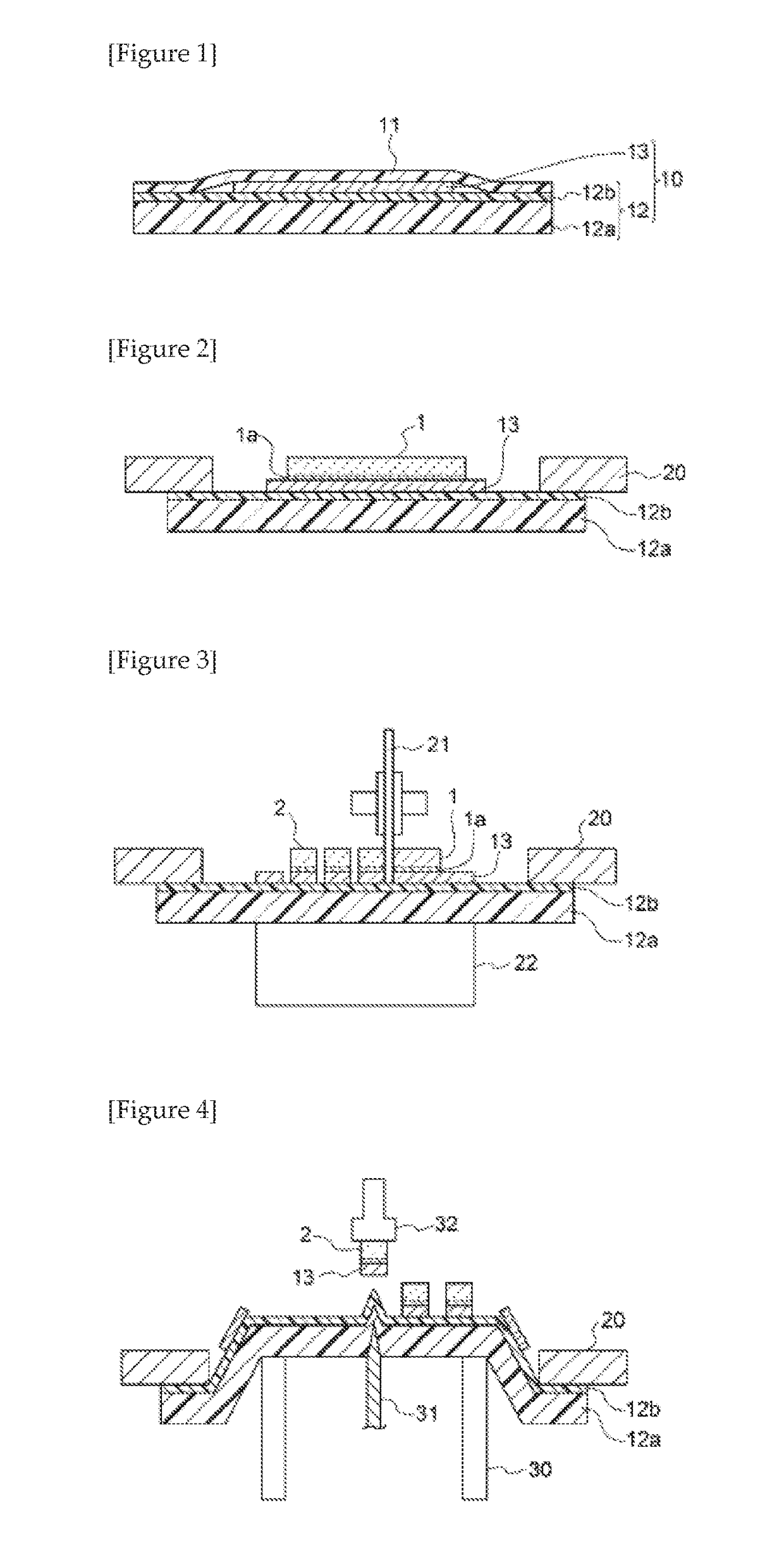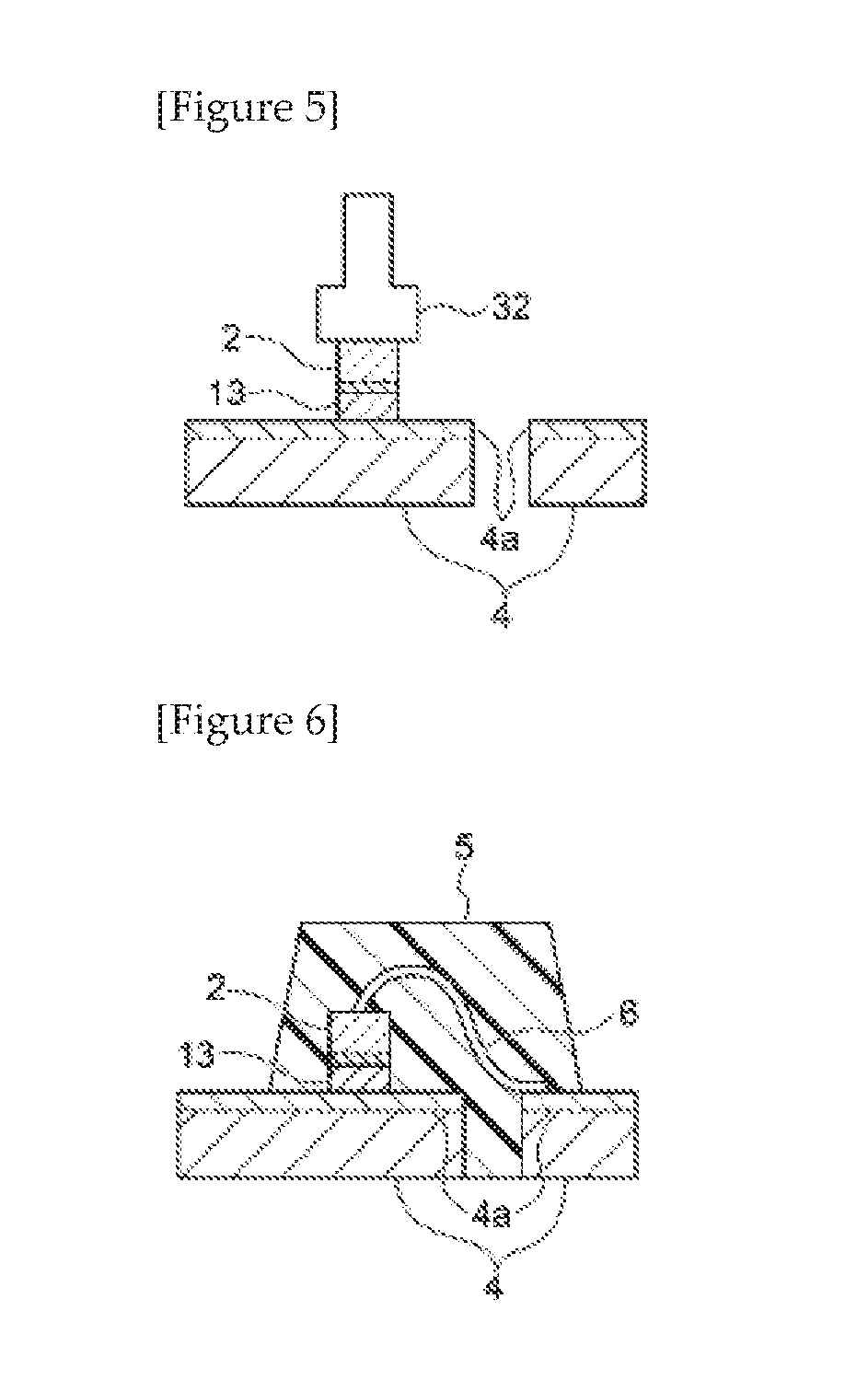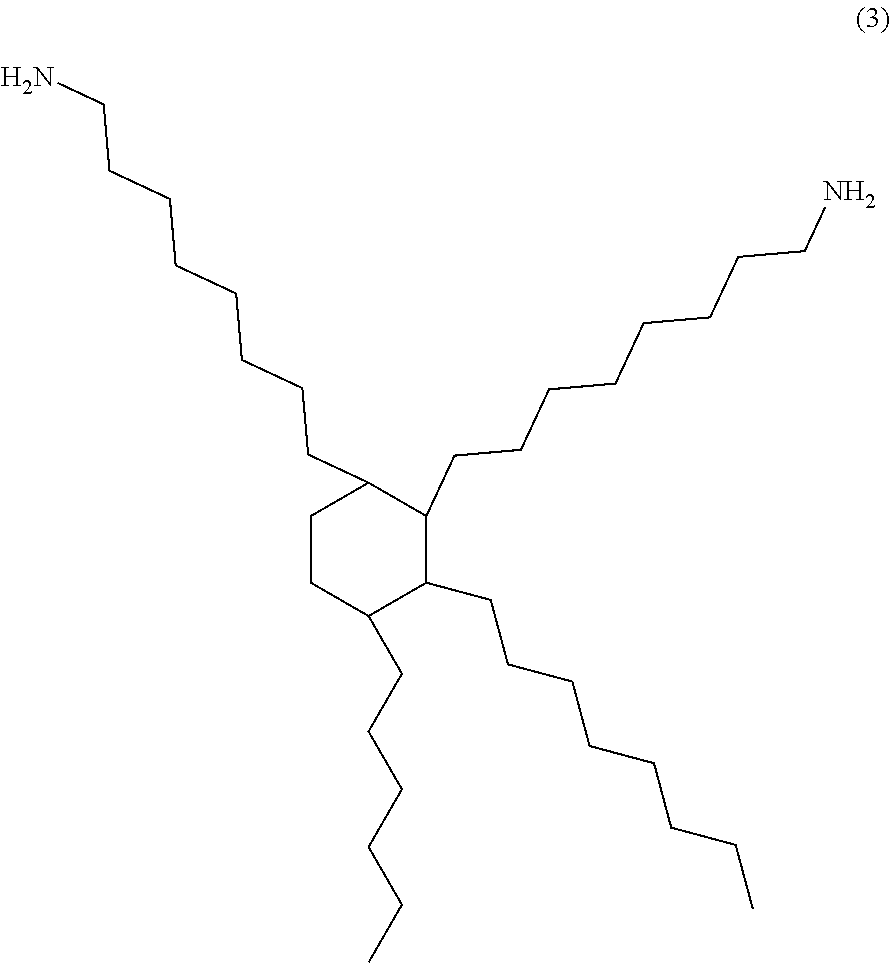Electrically conductive adhesive film and dicing-die bonding film using the same
a technology of dicingdie bonding and adhesive film, which is applied in the direction of heat-activated film/foil adhesive, film/foil adhesive without carrier, semiconductor/solid-state device details, etc., can solve the problems of lead-free solder wettability, lead-free solder is not yet practical use, and the safety of lead has become a problem. , to achieve the effect of improving the heat resistance after bonding and sintering and improving the reliability of mounting
- Summary
- Abstract
- Description
- Claims
- Application Information
AI Technical Summary
Benefits of technology
Problems solved by technology
Method used
Image
Examples
example 1
[0138]In Example 1, the materials shown in Table 1, among the aforementioned materials, were mixed so as to prepare a mixture of 91.5% by mass of the metal particle (Q), 5.5% by mass of the resin (M), and 3% by mass of the flux, then toluene was added thereto as a solvent to obtain a slurry, and the slurry was thinly applied onto a mold release-treated PET film after agitation using a planetary mixer, then dried for 2 minutes at 120° C. to obtain an electrically conductive adhesive film with a thickness of 40 μm. The metal particle (Q) used here consisted solely of a spherical copper powder used as the first metal particle (Q1).
example 2
[0139]In Example 2, an electrically conductive adhesive film was obtained in the same manner as in Example 1 except that metal particle (Q) was prepared so that the proportion of the spherical copper powder as the first metal particle (Q1) would be 60% by mass and that the proportion of the spherical tin powder as the second metal particle (Q2) would be 40% by mass in 100% by mass of the metal particle (Q).
example 3
[0140]In Example 3, an electrically conductive adhesive film was obtained in the same manner as in Example 1 except that a maleimide resin was used as the resin (M) and an organic phosphine was used as the flux, respectively and that metal particle (Q) was prepared so that the proportion of the spherical copper powder as the first metal particle (Q1) would be 60% by mass and that the proportion of the spherical tin powder as the second metal particle (Q2) would be 40% by mass in 100% by mass of the metal particle (Q).
PUM
| Property | Measurement | Unit |
|---|---|---|
| Temperature | aaaaa | aaaaa |
| Temperature | aaaaa | aaaaa |
| Fraction | aaaaa | aaaaa |
Abstract
Description
Claims
Application Information
 Login to View More
Login to View More - R&D
- Intellectual Property
- Life Sciences
- Materials
- Tech Scout
- Unparalleled Data Quality
- Higher Quality Content
- 60% Fewer Hallucinations
Browse by: Latest US Patents, China's latest patents, Technical Efficacy Thesaurus, Application Domain, Technology Topic, Popular Technical Reports.
© 2025 PatSnap. All rights reserved.Legal|Privacy policy|Modern Slavery Act Transparency Statement|Sitemap|About US| Contact US: help@patsnap.com



